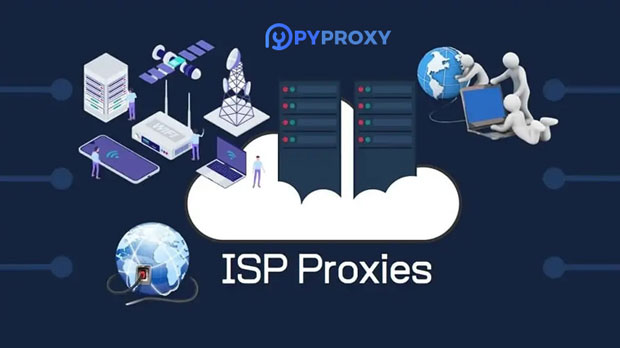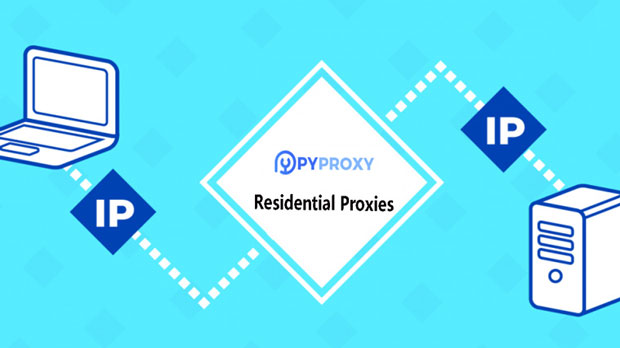Static residential proxies are a popular tool for internet users who require a stable and consistent online presence, often used for tasks like web scraping, market research, or accessing geo-restricted content. These proxies stand out by providing real residential IP addresses, which helps users avoid being blocked by websites. One of the key questions when selecting static residential proxies is: which countries and regions do they support? What are Static Residential Proxies?Before delving into which countries and regions are supported, it's important to understand what Static Residential Proxies are and how they work. A proxy server acts as an intermediary between the user and the internet, routing traffic through its IP address. Static Residential Proxies are unique because they provide IP addresses tied to real residential devices, as opposed to datacenter proxies, which use server IPs. This allows users to access content as if they are browsing from different locations, without the risk of detection by websites.Static Residential Proxies are especially useful for users who need to maintain a consistent IP address over a long period. Unlike dynamic residential proxies, where the IP address changes periodically, static proxies allow businesses and individuals to use the same IP address continuously. This is beneficial for tasks like account management, ticket purchasing, or social media management, where consistency and reliability are crucial.Global Coverage: Which Countries and Regions Do Static Residential Proxies Support?Static Residential Proxies generally offer a wide range of global locations, supporting thousands of IP addresses across numerous countries. Let’s explore which countries and regions are most commonly supported:North AmericaIn North America, Static Residential Proxies often offer support in the United States and Canada. These regions are the most popular for proxy usage due to their high internet penetration rates, diverse content, and significant economic activities.- United States: The United States is the primary region for Static residential proxy support. Due to the vast number of internet users and business activities, proxies from the US are highly sought after for tasks such as web scraping, ad verification, and accessing geo-restricted content from streaming services.- Canada: Canada is another key market for Static Residential Proxies. With a similar internet infrastructure to the United States, Canadian IPs are valuable for tasks that require accessing content available in North America while avoiding geo-blocks.EuropeEurope is another critical region for Static Residential Proxies. Proxies from European countries offer access to a range of services, particularly for those seeking to bypass regional restrictions or research market trends.- United Kingdom: The UK is often at the top of the list, with a strong demand for residential proxies for purposes such as ad verification and accessing UK-specific content.- Germany: Germany is a major player in the European tech landscape, with a growing demand for proxies used in web scraping and data collection.- France, Netherlands, and Other European Countries: Many other European countries offer residential proxy support, providing access to content, research, and web scraping tasks with local IP addresses.AsiaAsia has seen rapid internet growth, and as a result, Static Residential Proxies in Asian countries are in high demand for both local and global business operations.- China: Due to China's strict internet regulations and content censorship, proxies from China are invaluable for users seeking access to blocked websites or conducting market research in the region.- India: India has emerged as a growing hub for internet activity, making Indian residential proxies an excellent choice for businesses looking to access the Indian market.- Japan, South Korea, and Southeast Asia: Proxies from countries like Japan and South Korea are useful for accessing local services, while Southeast Asia remains a popular market for proxy users needing a presence in emerging digital economies.South AmericaWhile South America is not as heavily featured as North America or Europe in terms of proxy services, Static Residential Proxies in this region are gaining traction.- Brazil: Brazil, as the largest economy in South America, has a growing need for proxies for various tasks, particularly for local ad verification and accessing Brazilian content.- Argentina and Chile: Other countries in South America, like Argentina and Chile, are also starting to see more support for Static Residential Proxies as businesses in these regions expand their digital footprint.Africa and the Middle EastAfrica and the Middle East are emerging regions for static residential proxy usage. Although proxy services are less common here, there is increasing demand as the internet infrastructure improves and businesses seek access to these fast-growing markets.- United Arab Emirates (UAE): Proxies from the UAE are especially useful for accessing content and services in the Middle East, where online privacy is a concern.- South Africa: South Africa is the leading country for proxy services in Africa, offering access to local services and market research.- Other African Nations: Countries like Nigeria and Kenya are becoming more integrated into the digital economy, driving demand for proxies.Advantages of Using Static Residential Proxies Across Various RegionsThe ability to use Static Residential Proxies from different countries provides several benefits for businesses and individuals:- Avoiding Geo-blocking: Different regions have varying content restrictions, and Static Residential Proxies help users bypass these restrictions to access content from different countries.- Enhanced Security and Anonymity: Using a proxy that originates from the same country as your target audience helps maintain privacy and avoid detection. This is especially important for sensitive tasks such as web scraping, where anonymity is essential.- Improved Performance: By using residential proxies from the region closest to the content you are accessing, you can improve speed and reduce latency, enhancing the user experience.Static Residential Proxies offer valuable support across a wide range of countries and regions, enabling users to perform activities like web scraping, ad verification, and content access from anywhere in the world. Whether you're targeting North America, Europe, Asia, or emerging markets in Africa and South America, there is a residential proxy solution tailored to your needs. The geographic diversity of Static Residential Proxies ensures that users can access content securely, maintain anonymity, and optimize performance for their online activities. As the global digital landscape continues to evolve, the demand for proxies from diverse regions will only increase, making them an essential tool for modern internet usage.
Aug 21, 2025



































































